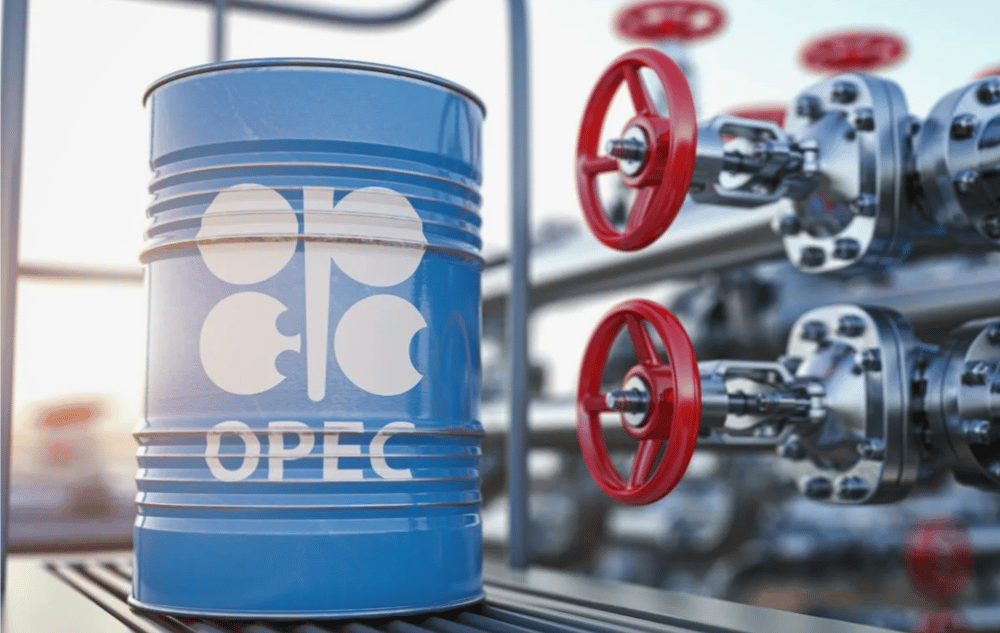OPEC+ Output Hike Spurs Oil Market Speculation Amid Global Demand and USD Sensitivity
Goldman Sachs $GS forecasts that the oil-producing alliance OPEC+, which includes major exporters such as Saudi Arabia and Russia, will raise its output by 410,000 barrels per day (bpd) in August. The projection, published in the bank's latest research note, follows the group’s decision on Saturday to increase July production by the same volume, signaling a clear intent to regain market share and exert pricing discipline on downstream refiners.
The move comes as global oil fundamentals remain relatively stable, while seasonality and macroeconomic indicators suggest a supportive environment for crude demand during the summer months. This evolving supply outlook holds implications for crude oil benchmarks, inflation expectations, and FX movements—particularly in USD-sensitive commodity markets.
Strategic Expansion Despite Demand Risks
Goldman Sachs attributes the anticipated OPEC+ supply increase to three interconnected dynamics: resilience in global industrial activity, strong seasonal demand during the Northern Hemisphere summer, and the group's effort to reclaim pricing power in a geopolitically fragmented energy market.
Despite growing concerns about the second-half demand trajectory—driven by high interest rates, sluggish growth in Europe, and weakening consumption in China—the cartel appears confident that the supply-demand balance will remain favorable enough to absorb additional barrels without triggering a price collapse.
OPEC+’s strategy also carries a geopolitical undertone. By boosting output, the group may be pressuring independent refiners and non-OPEC producers, particularly U.S. shale firms, that are more vulnerable to price competition. It also signals unity among the eight-country coalition as they aim to calibrate output more assertively in a post-pandemic oil market still navigating volatility in FX rates, especially the USD.

What’s Behind the OPEC+ Output Strategy
OPEC+ to raise July oil production by 410,000 bpd.
Goldman Sachs projects same increase in August, citing seasonal and macro tailwinds.
Crude oil demand remains supported by summer travel and global manufacturing recovery.
Policy aims to penalize refiners and reclaim market share.
Stable supply fundamentals suggest price floors near $80/bbl for Brent.
Further Analysis: Market Response and Expert Insight
Oil prices reacted moderately to the July output announcement, with Brent crude futures hovering near $82 per barrel, suggesting markets had already priced in a gradual ramp-up in production. However, analysts caution that any deterioration in global demand—or a significant strengthening in the U.S. dollar (USD)—could undermine the cartel’s strategy.
The USD’s strength remains a pivotal factor for oil demand in emerging markets, where currency depreciation amplifies import costs. Should the Federal Reserve maintain a restrictive monetary stance through Q3, this could offset seasonal demand and compress margins for importers.
Meanwhile, equity markets tied to the energy sector, particularly within the SPX and FTSE 100, are closely monitoring the pricing impact of the new OPEC+ volumes. Energy majors such as ExxonMobil $XOM, Chevron $CVX, and BP $BP could face margin pressure if higher volumes are met with stagnant prices.

Strategic and Market Implications
OPEC+ shows cohesion in targeting refiners with output hike.
Goldman Sachs sees no immediate demand cliff, supporting modest supply expansion.
USD strength poses downside risk to emerging market crude demand.
Oil prices remain range-bound, with Brent likely supported above $80/bbl.
Energy equities could see volatility depending on FX trends and inventory data.
Strategic Volume Gains Amid Fragile Demand Outlook
OPEC+’s measured production hike signals a calculated bet that stable demand and seasonal momentum will outweigh macroeconomic drag in the short term. Backed by analysis from Goldman Sachs, the forecasted August increase further illustrates the group’s dual mandate: reinforcing control over oil pricing and sustaining political cohesion among member states.
The strategy’s success will hinge on FX trends—particularly USD dynamics—and evolving demand signals in Asia and Europe. With oil prices delicately balanced and financial markets attuned to central bank shifts, the July and August production outcomes will likely shape the narrative for crude through the rest of 2025.















Comments
Strategic investment like this paves the way for scalable and intelligent growth